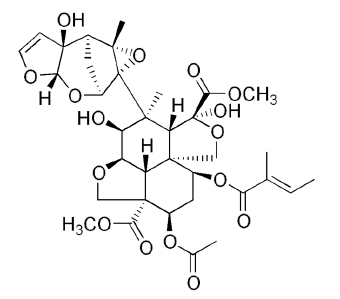We have discovered that the synthetic agrochemicals responsible for boosting agricultural yields and saving over one billion people from starvation in the 20th Century are now causing long-term damage to our health and the global food system. Rather than synthesizing new chemicals for crop protection, which would further proliferate arable land degradation, the world’s agricultural institutions are adopting a new approach – looking to nature for inspiration.
Where can these alternatives be found in nature? Just about anywhere – whether in plant extracts or soil microbes, our environment has provided us with many resources that can be utilized for crop protection and crop management. In fact, the human race has relied on organic methods for crop protection since the dawn of agriculture. Traditional farming methods are in fact superior to their synthetic counterparts in the long term, ultimately evading some of the more severe side effects of chemical use such as nutrient depletion and soil erosion. Today, an estimated 9 million hectares of arable land is degraded every year in part due to the extensive use of synthetic chemicals for crop care in agriculture. As agricultural yield growth is plateauing, and arable land is disappearing, we will need these alternatives to support the nutritional needs of our growing populations.
Whether utilized as pesticides or growth stimulants, carefully designed and naturally derived products are now considered the new agricultural saviors, attracting significant investment from start-us and heavyweights like Monsanto, Bayer and DuPont. The agricultural industry is set on finding these useful biochemicals, although this is no easy feat as the process involves isolating a particular chemical compound out of billions that live in a handful of soil or in a single leaf of a tree. Although there is incentive – the global agrochemical market was valued at $207 billion in 2015, with natural alternatives holding an $8.5 billion share. That is impressive room for growth, especially with consumers and governments making moves towards a more organic food supply. In partnership with Novozymes, Monsanto is already testing 2,000 compounds isolated from soil from around the world in their attempt to source a naturally derived pesticide and fertilizer. Biotech experts such as Bio Consortia, NewLeaf Symbiotics and Indigo Agriculture are also joining in on the hunt.
Despite the enthusiasm for discovering organic compounds for crop care, screening for these compounds is akin to spending billions of dollars to find a needle in a haystack. The first challenge therefore is to overcome is the gap in basic knowledge. This can be achieved by isolating biologically active compounds that already demonstrate effectiveness in crop protection. One such compound has already been found in the neem tree.
Azadirachtin – Neem’s Biologically Active Compound
Though known for centuries in rural settings across Asia as the ‘Village Pharmacy’, and while research into neem has been underway in India since the 1920s, it was only in 1959 that a German entomologist in Sudan made a groundbreaking observation. A locust plague surged near his area of study ravishing all in its path, with exception of the neem tree. Azadirachtin, now renowned for its robust insecticidal properties against 500 species of insects, was then discovered and synthesized by scientists at the University of Cambridge. Entirely biodegradable and non-toxic to mammals, this compound in neem disrupts the hormonal balance of insects and deters them from feeding on crops. Since neem must be ingested to take effect, only pests that feed on plant tissue are exposed thereby eliminating risk towards pollinators and other natural enemies that are beneficial to our environment.
The natural world is full of solutions to the major issues facing agriculture today. Natural alternatives for crop protection are on their way to the mainstream as they become increasingly popular for consumers, highly profitable for producers and extremely beneficial for our health and the environment. We are reaching a new frontier for crop protection and crop management.
